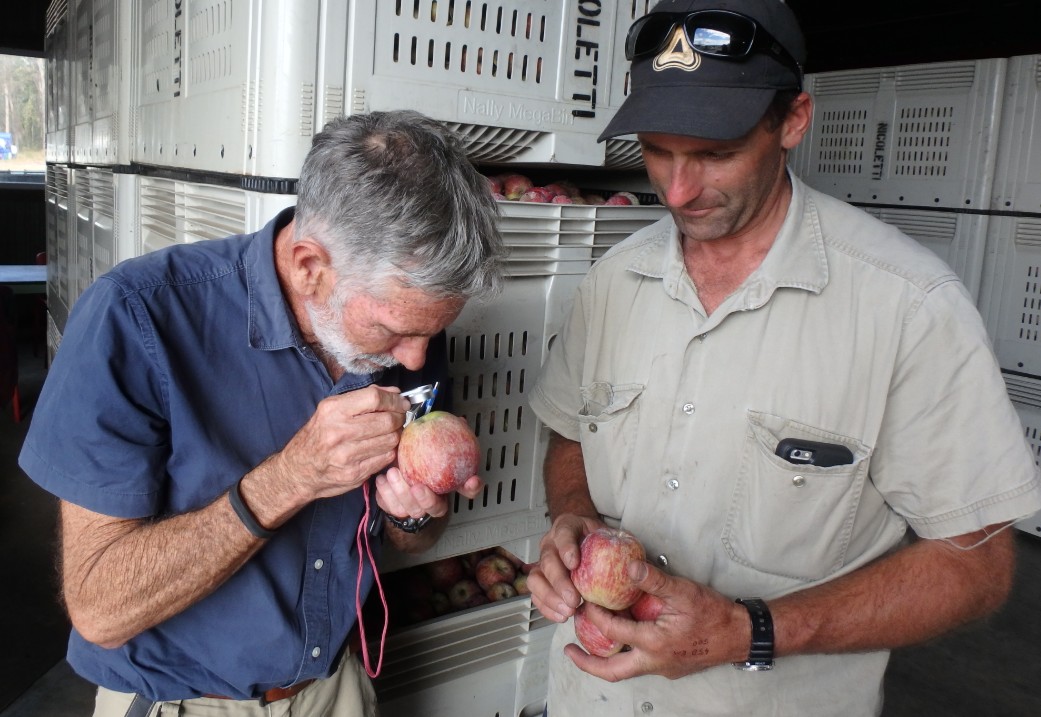Daniel Nicoletti, Stanthorpe QLD:
What are the main IPDM issues being focussed on?
Main issues are mites, mealybugs, and QFF. Codling moth is no longer an issue.
What are you doing currently with IPDM?
Attempting to get mealybug control by releasing predatory beetle (Cryptolaemus). Have also mowed every second alley to encourage predatory mites that eat TSM.
Using traps to monitor moths and a scout to monitor mites and other pests.
What has worked well? What hasn’t?
Have given up use of mating disruption “Twisties” against codling moth because spraying Samurai, Altacor, Delegate, Cormoran against codling moth is helping reduce mealybug. Unfortunately this appears to be creating a mite problem. Elders are monitoring mites but Daniel forgot to spray when they indicated he should.
What would you do differently next time?
- Pay more attention to advice and timing!
- Develop a monitoring plan for mealybug using limb bands established in April to monitor crawler emergence from shelter in spring.
- Develop alternative chemical plan to support predators.
- Consider release of P.persimilis predatory mite in autumn to reduce TSM carryover.
- Work with Elders to trial use of CLIDs (cumulative leaf infested days) as a predictive tool to improve management of TSM
Any interesting learnings?
- Do not be complacent. Need to keep on top of monitoring results and advice.
- Lack of water is complicating things by stressing trees (but has probably helped in management of black spot).
- Need more information to be available on impact of pesticides on non-target species.
- Cryptolaemus appears to prefer egg-laying mealybugs but longtailed mealybugs do not lay eggs so may not be a good host. Need to look for a better predator for this pest.
Take home message
Monitoring and planning responses to contingencies is important so you can act on advice and have appropriate chemicals on hand if you need them

